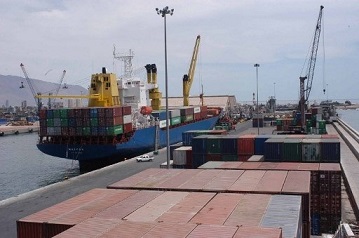
Latin American countries are “in many ways well positioned” to take advantage of global supply chain restructuring – but the right conditions must be in place.
The region could benefit from a trend, that some say the COVID-19 pandemic is accelerating, of multinationals reducing their Asian exposure and shortening their supply chains.
Latin America is geographically close to the US. Plus, more than 10 countries in the region have a free trade agreement with the economic powerhouse and many have relatively low barriers to foreign direct investment.
Mexico and Costa Rica, already integrated into US supply chains, are particularly well-placed.
“In this context of supply chain restructuring, I think new opportunities for attracting and expanding foreign direct investment have opened and more are yet to come,” said Anabel González, a former foreign trade minister of Costa Rica. “Latin American countries are in many ways well positioned to take advantage of the new context.”
But governments must lay the right foundations, González said during a webcast hosted by US think-tank Center for Strategic & International Studies (CSIS).
González cited several focus areas that are critical for the region to leverage these new opportunities: skilled and non-skilled competitive labor, logistics infrastructure and an attractive business environment.
Regulations that ease the flow of goods and people, along with a rules-based trade system, are also vital, González said.
This was echoed by Juan Carlos Baker, a former Mexican undersecretary of foreign trade, who added that regional trading blocs such as the Pacific Alliance could also adapt their own rules to keep apace with global trends.
“It’s not only about how countries in Latin America relate to the United States but it’s also about how countries in Latin America related to themselves,” he said.
MAKE IT “EASIER AND CHEAPER”
Miguel Braun, a senior advisor to the CSIS Americas Program, said a free-trade agreement with the US could benefit Latin American countries by spurring investment.
While not a panacea for all development challenges, it would be “a strategic step in the right direction,” he said.
“It is a win-win proposition. The US wins because a free-trade agreement will provide the environment and incentives for companies to reshore or nearshore their investments to the US and to the Americas, but unfortunately this won’t be massive and it won’t happen overnight.”
He said billions of dollars has been pumped into Chinese manufacturing operations over recent decades and that pulling out overnight is not feasible.
“But we have to trust our businesses and our entrepreneurs. If we make it easier and cheaper for them to invest in the western hemisphere we have to trust that they are going to do it and they are going find the niches in the value chains where they can make money and add value.”
USMCA
Meanwhile, on July 1 the United States-Mexico-Canada (USMCA) trade agreement enters force.
A key focus is bringing manufacturing production back to the region, Baker told the webcast.
Baker, now CEO of Mexico City-based consulting firm Ansley Consultores, forecast companies will move away from long, atomized supply chains. “This is a trend that I believe is going to continue for some time,” Baker said.
He added that US bilateral free trade deals with Latin American countries may eventually be reshaped to bring them in line with the USMCA.


